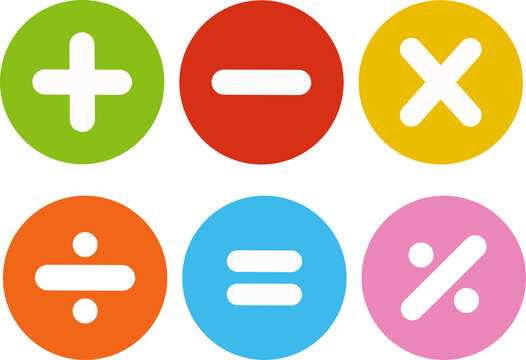Search here

09-Aug-2023 , Updated on 8/9/2023 5:33:22 AM
How mathematics and symbols translate natural phenomenon
Highlights
- Abstract Representation- Mathematics provides a concise and abstract way to represent natural phenomena, allowing complex concepts to be expressed symbolically.
- Universal Language- Mathematical symbols create a universal language that transcends cultural and linguistic barriers, enabling scientists and researchers worldwide to communicate and collaborate effectively.
- Predictive Power- Through mathematical models, scientists can predict and describe natural phenomena with remarkable accuracy, facilitating the understanding of complex systems like celestial motion, fluid dynamics, and quantum mechanics.
- Quantitative Relationships- Mathematics helps establish precise quantitative relationships between variables, aiding in the analysis of cause-and-effect relationships in natural processes.
- Pattern Recognition- Mathematical patterns and symmetries in nature, such as the Fibonacci sequence or fractal geometry, provide insights into underlying structures and processes.
- Data Interpretation- Mathematical tools like statistics and calculus allow for the interpretation of experimental data, enabling researchers to draw meaningful conclusions from observations.
Mathematics is often hailed as the universal language of science, providing a precise and systematic way to understand and describe natural phenomena. The relationship between mathematics and the physical world is deeply intertwined, with mathematical symbols serving as a bridge between abstract concepts and tangible observations. This view delves into the fascinating realm of how mathematics and symbols translate natural phenomena, unraveling the profound connection between these seemingly disparate realms.
The Language of Nature
Nature's complexity is beautifully captured through mathematics, allowing scientists to make sense of intricate patterns and relationships that govern the physical universe. Whether it's the motion of celestial bodies, the behavior of subatomic particles, or the growth of populations, mathematics provides a common language that enables us to express these phenomena in a coherent and concise manner.
At the heart of this translation process are mathematical symbols . Symbols like numbers, equations, and functions serve as powerful tools for representing and manipulating natural phenomena. For instance, Isaac Newton's laws of motion are succinctly summarized in the equation F = ma, where F represents force, m represents mass, and a represents acceleration. This equation distills complex interactions between matter and energy into a simple, elegant expression, highlighting the role of symbols in capturing the essence of natural processes.

Abstraction and Generalization
One of the remarkable features of mathematics is its ability to abstract and generalize concepts. Through abstraction, mathematicians strip away unnecessary details, focusing on the essential characteristics of a phenomenon. This abstraction not only simplifies complex ideas but also enables scientists to identify common patterns that apply across different scenarios.
Symbols play a pivotal role in this process of abstraction. Consider the concept of a circle. In its simplest form, a circle is a collection of points equidistant from a central point. This geometric shape can be represented using the symbol "C". By attaching this symbol to the broader concept of a circle, mathematicians create a shorthand that encompasses a wide range of specific instances, from planetary orbits to wheel rotations.
Quantification and Measurement
Mathematics enables precise quantification, turning qualitative observations into quantitative data. Through symbols, scientists can measure and compare quantities, allowing them to make accurate predictions and draw meaningful conclusions. For instance, the symbol π (pi) represents the ratio of a circle's circumference to its diameter. This simple symbol has profound implications, helping scientists calculate the areas of circular objects, predict the behavior of waves, and even model the distribution of prime numbers.
Symbols also play a crucial role in units of measurement, bridging the gap between abstract mathematical concepts and real-world observations. The symbol "m" denotes meters, "s" stands for seconds, and "kg" represents kilograms. These symbols allow scientists to express physical quantities in a standardized manner, facilitating communication and collaboration across disciplines.
Predictive Power and Scientific Discoveries
Mathematics possesses remarkable predictive power, allowing scientists to make forecasts and discoveries about the natural world. By formulating mathematical models based on observed patterns, scientists can extrapolate and anticipate future behaviors of various phenomena. This predictive ability has led to significant scientific advancements and technological innovations .
Symbols, once again, play a central role in this process. Equations like Einstein's E = mc², where E represents energy, m symbolizes mass, and c stands for the speed of light, have revolutionized our understanding of the universe. This equation unveiled the profound relationship between mass and energy, paving the way for nuclear energy and changing the course of history.
From Theory to Application
The translation of natural phenomena through mathematics doesn't end with theory; it extends to practical applications that impact our daily lives. Engineers, architects, and designers rely on mathematical principles to create structures that withstand stress and optimize efficiency. The symbols they use, such as trigonometric functions (sin, cos, tan), enable them to calculate angles, distances, and forces accurately.
In fields like medicine, mathematics plays a crucial role in imaging technologies such as MRI and CT scans . These medical imaging techniques are based on complex mathematical algorithms and symbols that transform raw data into detailed visual representations of the human body's internal structures.
Mathematics and symbols serve as the intricate thread connecting the abstract realm of theories and the tangible world of natural phenomena. Through the power of abstraction, quantification, and prediction, mathematics provides a framework for understanding and interpreting the complexities of the universe. Symbols, whether representing numbers, equations, or units of measurement, are the language through which scientists communicate and collaborate across disciplines.
As we continue to unlock the mysteries of the natural world, the partnership between mathematics and symbols will remain a cornerstone of scientific progress. From the deepest reaches of space to the microscopic realms of particles, this powerful combination will continue to illuminate the intricate tapestry of existence and reshape our understanding of reality.

SEO and Content Writer
I am Drishan vig. I used to write blogs, articles, and stories in a way that entices the audience. I assure you that consistency, style, and tone must be met while writing the content. Working with the clients like bfc, varthana, ITC hotels, indusind, mumpa, mollydolly etc. has made me realized that writing content is not enough but doing seo is the first thing for it.
Join Our Newsletter
Subscribe to our newsletter to receive emails about new views posts, releases and updates.
Copyright 2010 - 2025 MindStick Software Pvt. Ltd. All Rights Reserved Privacy Policy | Terms & Conditions | Cookie Policy